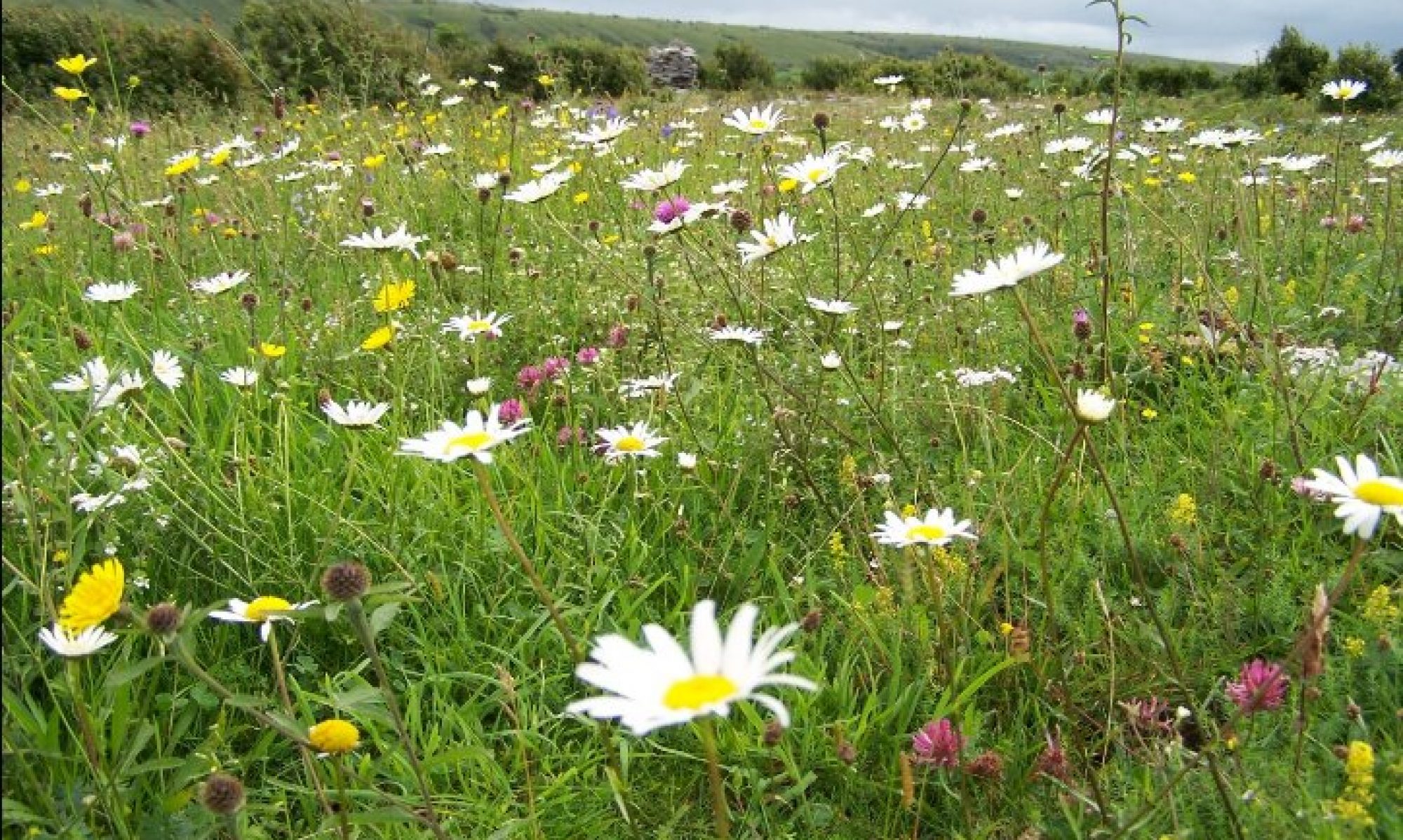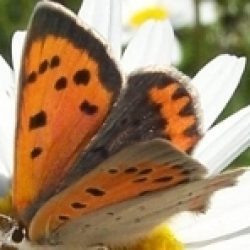One of Europe’s most widespread blue butterflies (absent in Ireland), the Chalkhill Blue Lysandra coridon, a relatively large species of blue which in the male has bright pale ‘chalky’ blue uppersides has been studied for its relationship with ants, its conservation needs, especially in England and its genome. Genome refers to the full complement of DNA in a cell. DNA contains the information needed for an organism to develop. Humans have 23 pairs of chromosomes in the cell’s nucleus. As is the case for butterflies, half are inherited from each of the parents. The haploid number in a human sex cell is therefore 23; the full complement after the fusion or joining of the chromosomes, the diploid number, is 46.
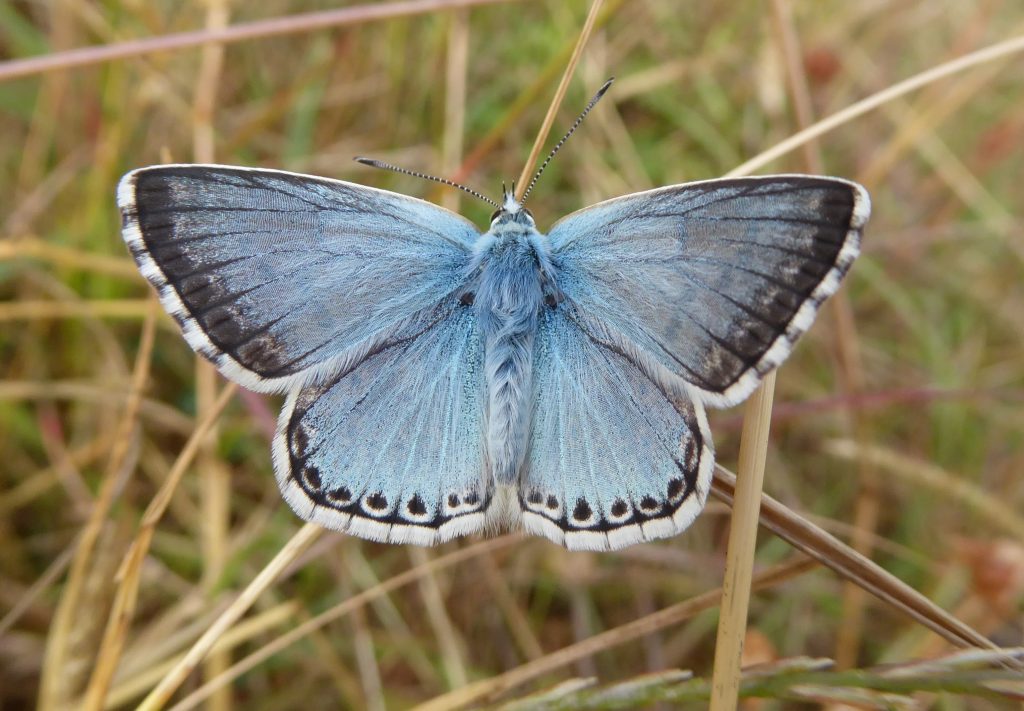
The Chalkhill Blue, however, does not always conform to this neat formula. From Spain to Bulgaria, the chromosome numbers in Chalkhill Blues range from 87-92 with higher counts predominating in eastern Europe. From southern to northern Europe, the chromosomal range is 87-90. Why has the butterfly added chromosomes as it moved north after the last Ice Age, and while moving east? Was it adapting to a cooler climate? Typically, an animal contains a fixed number of chromosomes; a butterfly with more or fewer than another butterfly might be a different species.


Does this mean that the ‘Chalkhill Blue’ in England and northern Europe is a separate species from the Chalkhill Blue in Northern Spain? Not necessarily, according to Tom Tolman, author of the Collins Guide to The Butterflies of Britain and Europe, expertly illustrated by Richard Lewington.
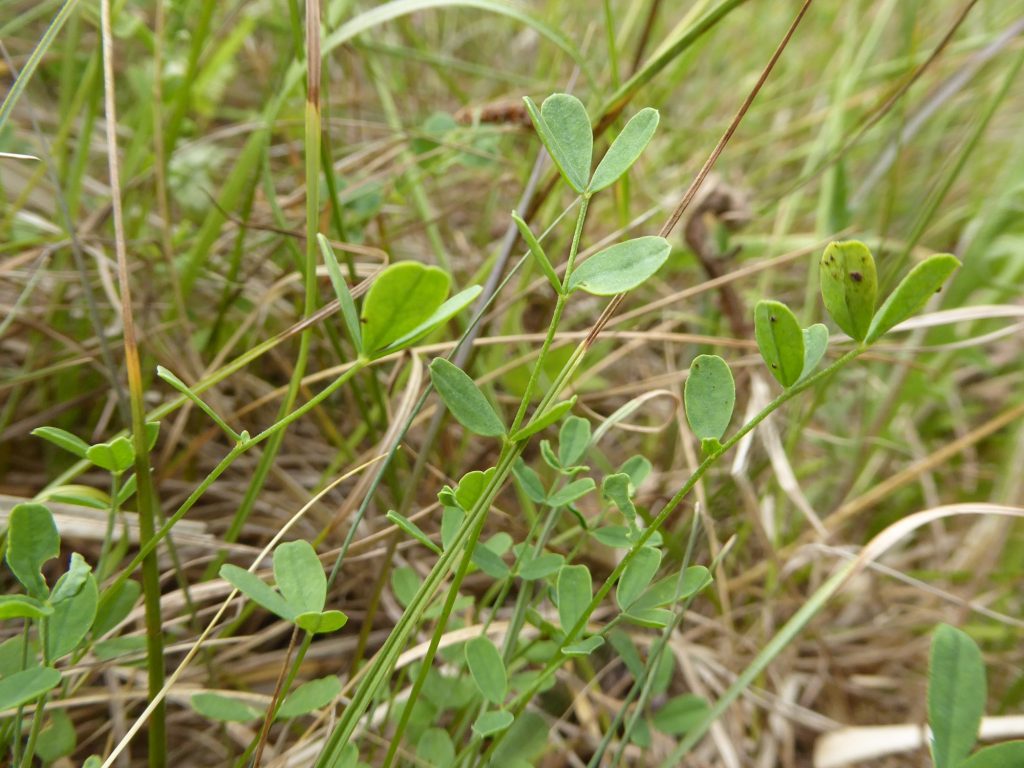
Tolman states the change in chromosome numbers from Spain to Bulgaria appears clinal. A cline is a progressive, usually continuous change in one or more traits over a geographical or altitudinal range. An example of a cline in Ireland might be the change in the proportion of brown to blue female Common Blue butterflies. In drier coastal areas in eastern Ireland, most females have brown uppersides. As one moves west, there is a progressive change from brown to blue, with some females in the far west showing very little brown on their uppersides.
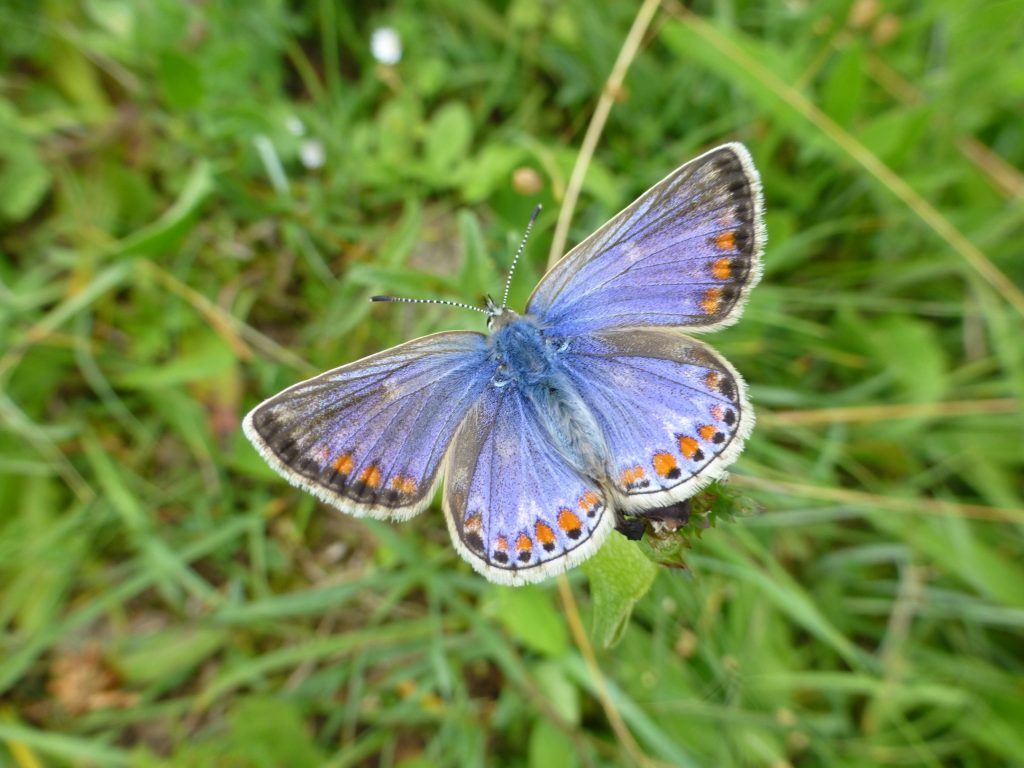
No one currently believes these blue and brown Common Blues are separate species. In Scotland, the Common Blue produces one generation a year and maintains this characteristic even when bred in the south of England. It is genetically programmed to produce only one generation but this genetic difference with its southern English cousins does not make it a separate species.

Neither are factors such as appearance always reliable species indicators; the Wood White and Cryptic Wood White are identical but separate species. The most accepted definition of a species is based on whether two individuals can or are willing to mate to produce offspring that are healthy and can reproduce.
This occurs when Chalkhill Blue butterflies with slightly different chromosome numbers pair. The additional unpaired chromosome is excluded. While this might result in the loss of some genetic information, such loss is likely selective and does not prevent the development of viable offspring. Nature finds a way.
There is plenty of confusion concerning the Chalkhill Blue. Many colour forms confuse taxonomists as to what butterfly they are looking at. Some believe that the butterfly that occurs in central Spain, Lysandra coridon caelestissima (Verity 1921 Type Locality: Central Spain, Albarracin) is a sub-species [i]of the Chalkhill Blue; others say it is a separate species. Tolman (2009) accepts the Macedonian Chalkhill Blue Lysandra phillippi as a separate species. Based on appearance, I find it impossible to separate this butterfly from the Chalkhill Blue in England. The Macedonian Chalkhill Blue uses the same larval foodplant, Horseshoe Vetch and is single-brooded, appearing in July and August, like populations in southern England. However, the Macedonian Chalkhill Blue has a much lower chromosome count, ranging from 20-26; in the Chalkhill Blue, this ranges from 84-92.
Just because the Chalkhill Blue has many more chromosomes than the Macedonian Chalkhill Blue does not mean that there are significant genetic differences. Some genes (DNA sequences on a chromosome) are redundant, persisting as a legacy of evolutionary history. In humans, the appendix is largely believed to be redundant, for example.
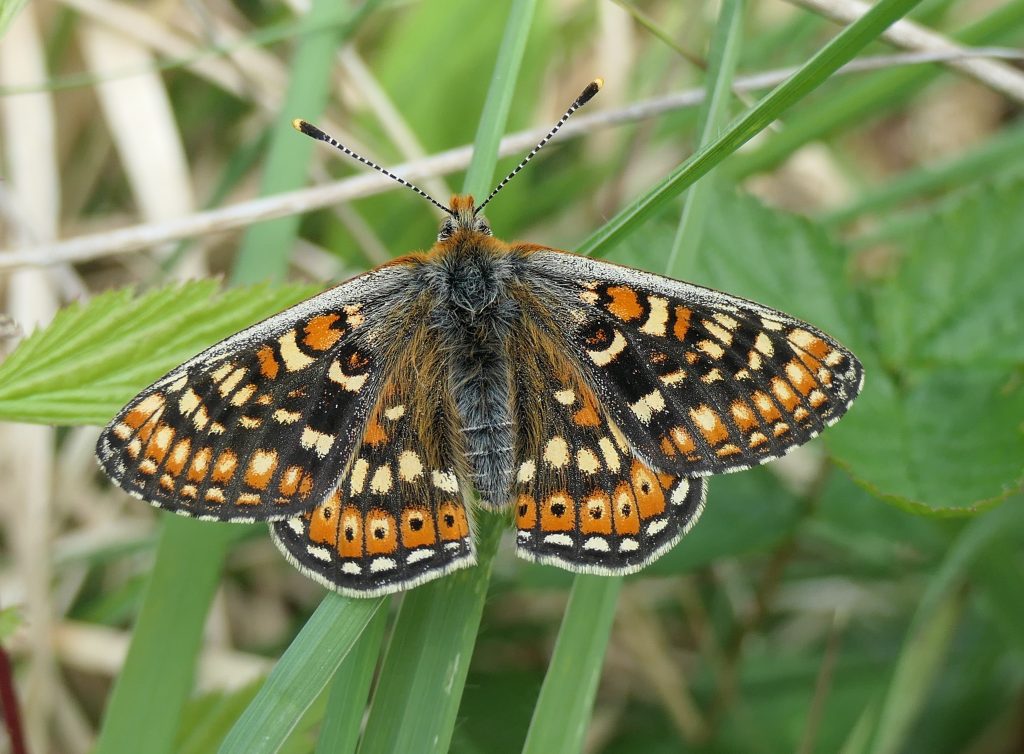
Some believe the Chalkhill Blue might be producing new species through fission events. Fission occurs when a single entity divides into two or more parts and the regeneration of those parts to separate entities resembling the original. The object experiencing fission is usually a cell, but the term may also refer to how organisms, bodies, populations, or species split into discrete parts.
A study published in February 2024, Comparative genomics reveals the dynamics of chromosome evolution in Lepidoptera, looked at butterfly genomes and found that most have shown remarkable stability, changing little over 250 million years. However, changes occurred in a few species, including the Chalkhill Blue. Most butterflies hold 28-31 chromosomes, not 90 plus as is often the case in the Chalkhill Blue.
To investigate the dynamics of fission in the Lysandra genus, the study reconstructed the events that gave rise to the genome structures of Chalkhill Blue and the closely related Adonis Blue Lysandra bellargus. Seven pairwise fusions generated a karyotype (full complement of chromosomes) of n = 24 in the last common ancestor of the family Lycaenidae (the coppers, hairstreaks and blues). Fifteen fissions then generated n = 39 in the last common ancestor of Lysandra. Subsequently, Lysandra bellargus underwent six fissions generating n = 45 and Lysandra coridon experienced at least one fission event in 37 of the 39 chromosomes of the Lysandra last common ancestor. An overwhelming majority of the 90 chromosomes in Lysandra coridon mapped to a single Merian element (Merian refers to ancestral linkage groups of modern butterflies and moths) and show conservation of gene order. The few Lysandra coridon chromosomes that contained segments from more than one Merian element derive from the seven fused chromosomes present in the common ancestor of the family Lycaenidae.
The study states that fusion and fission events are rare and very rare respectively and overwhelmingly occurred in just eight of the 32 ancestral linkage groups modern butterflies and moths are derived from. Other species that have undergone such changes are the Large White Pieris brassicae, Green-veined White Artogeia napi, Small White Artogeia rapae, Tinea semifulvella, Hewitson’s Tiger-wing Melinaea menophilus, Melinaea marsaeus, Black-veined White Aporia crataegi, Lesser Marbled Fritillary Brenthis ino, Winter Moth Operophtera brumata, Brown Scallop Philereme vetulata, Wood White Leptidea sinapis and Lilac Beauty Apeira syringaria.
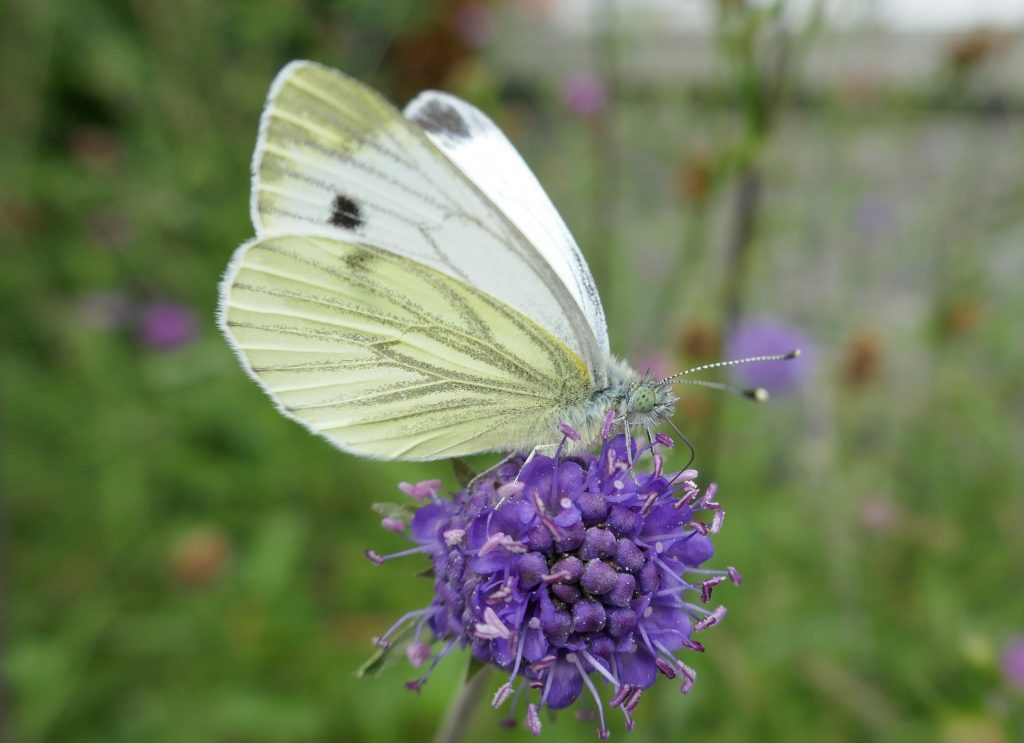
Of these, the Large White, Green-veined White, Small White, Winter Moth, Brown Scallop, Wood White and Lilac Beauty occur in Ireland. Some believe the Green-veined White is in an active state of evolution while others maintain the variations in this butterfly are influenced by ecological factors. Ecological factors that influence the appearance of a species can include climatic influences such as sunshine and rainfall levels, cloudiness, temperature, and features such as elevation and habitat conditions such as the presence of exposed rock, etc.
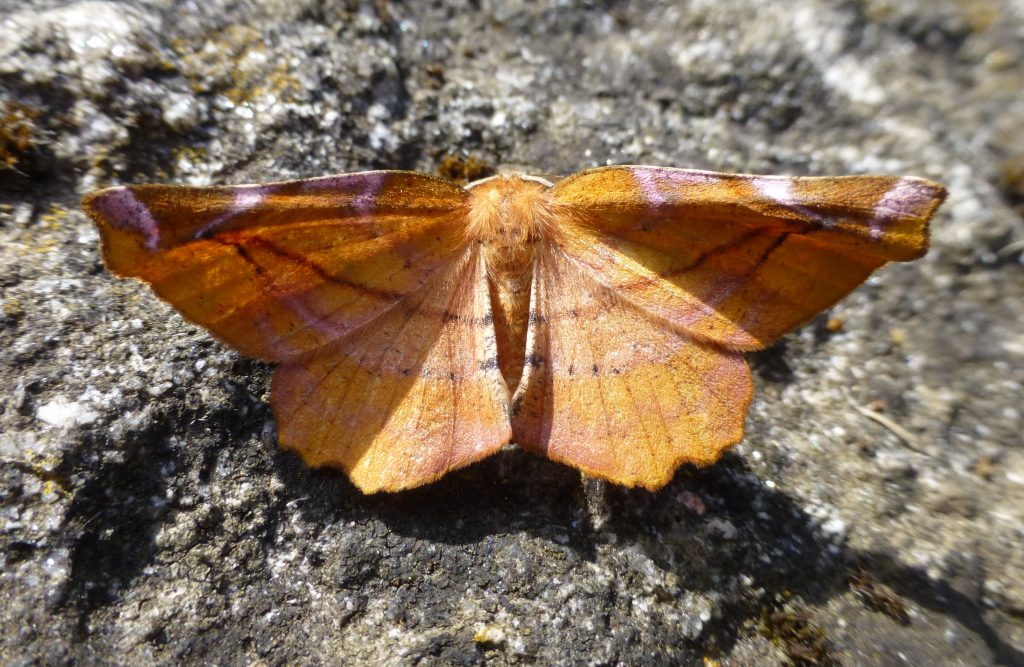
However, adaptation to ecological conditions can give rise to new species.
Speciation (the process by which populations evolve to become distinct species) can occur in response to changing conditions, such as a changing climate. Mutations (alterations in the DNA) occur naturally in all populations. Better-adapted mutants thrive while less well-adapted individuals gradually, or suddenly, disappear. Less beneficial traits are bred out by natural selection. This underlines the importance of conserving genetic diversity within species, meaning conserving a species across various habitat types, landscapes and continents.
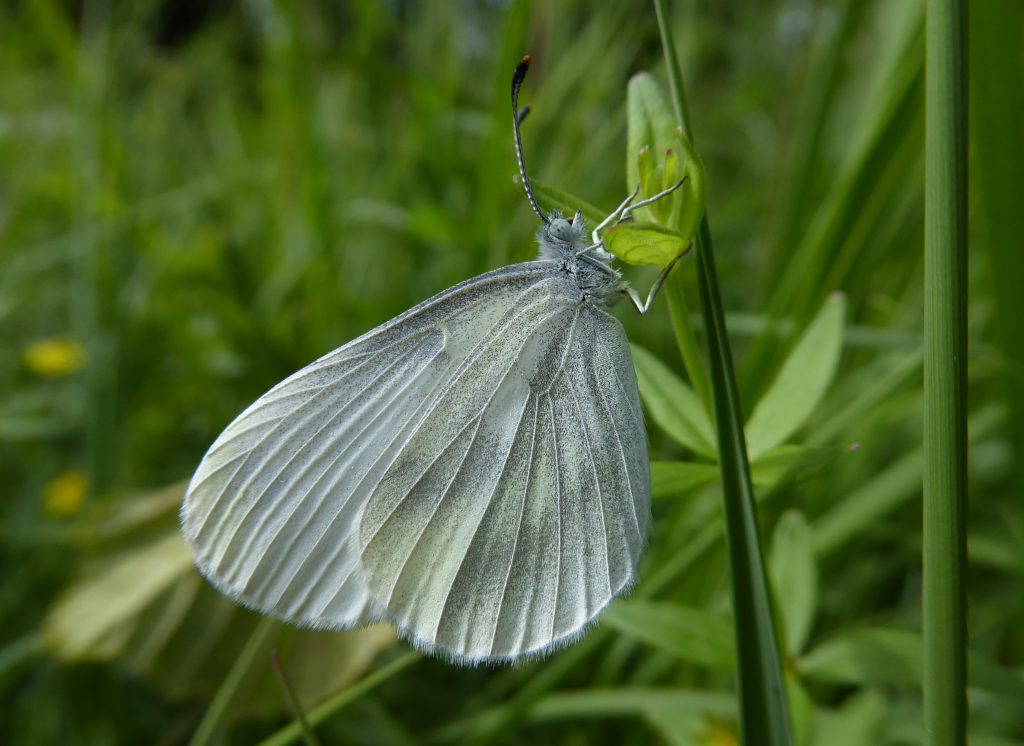
However, we have seen that most butterfly genomes have remained stable over the past 250 million years. This indicates that Lepidoptera are well designed containing within their genome sufficient resilience to adapt to changing conditions to continue their purpose.
We ought to marvel at this winning design. Butterflies have been on the planet far longer than us. The first modern genera [ii] came into existence during the Paleogene era, between 23-66 million years ago. The oldest known still-existing species is the Ancient Metalmark Voltinia danforthi, from Sonora, Mexico. This butterfly evolved as long as 40-50 million years ago. Homo sapiens emerged about 300,000 years ago (Smithsonian Magazine, 2021).
Our destruction of most of the planet’s natural vegetation is challenging 250 million years of Lepidoptera existence, the continuation of one of the most important animal groups on Earth. We need to adapt rather than reshape the environment to suit ourselves.
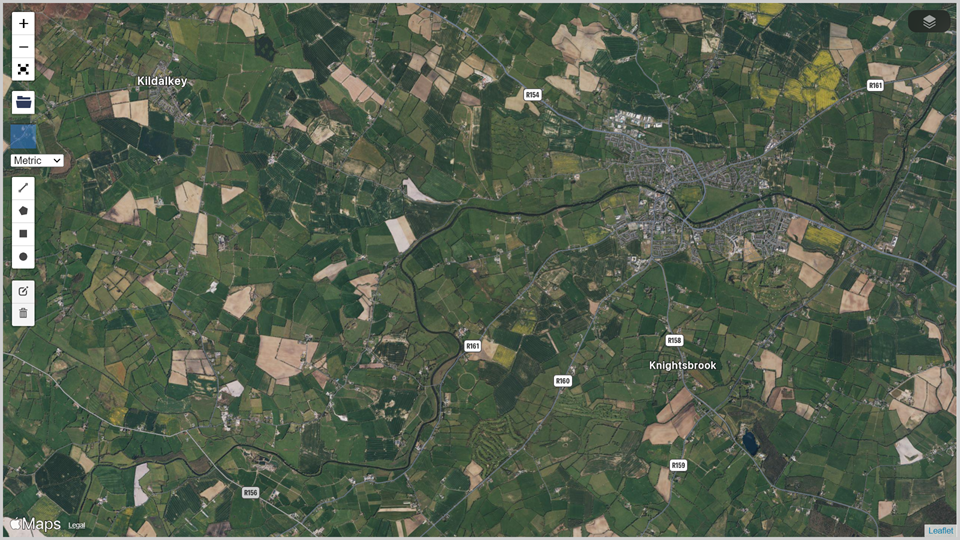
Key References
Handwerk, B. (2021). An Evolutionary Timeline of Homo Sapiens. Smithsonian Magazine. Available at: https://www.smithsonianmag.com/science-nature/essential-timeline-understanding-evolution-homo-sapiens-180976807/.
McKie, R. (2024) Startling genome discovery in butterfly project reveals impact of climate change in Europe, The Guardian. Available at: https://www.theguardian.com/environment/article/2024/aug/11/genome-discovery-butterfly-project-impact-climate-change-europe-moths?CMP=share_btn_url (Accessed: 19 August 2024).
Tolman, T. and Lewington, R. (2009) Collins Butterfly Guide. Harper Collins, London.
Wright, C. J., Stevens, L., Mackintosh, A., Lawniczak, M., & Blaxter, M. (2024). Comparative genomics reveals the dynamics of chromosome evolution in Lepidoptera. Nature Ecology & Evolution, 8(4), 777-790. https://doi.org/10.1038/s41559-024-02329-4
[i] A subspecies is a population occupying a distinct geographical region, separate from other populations of the same species and having constant and clearly different characters; the subspecies can breed with the populations regarded as the species if they meet.
[ii] A genus (plural genera) is the group above species but below family, e.g. species: Common Blue Polyommatus icarus, genus: Polyommatus, family: Lycaenidae)
All photographs copyright J. Harding.
